Head Start Earns an F: No Lasting Impact for Children by First Grade
Authors:Dan Lips and David Muhlhausen
ALPHA-PHONICS Blog. EdiorNote: What is Head Start?
Head Start is a 52 year old Federal program that promotes the school readiness of children from birth to age five from low-income families by enhancing their cognitive, social, and emotional development. … These programs help build relationships with families that support family well-being and many other important areas.
Although this article was written in 2010 nothing has changed.
The federal government spent at least $25 billion on federal preschool and child care programs in 2009,[1] but President Obama has pressed for significant increases in 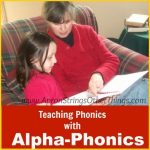 preschool spending. The Administration approved $5 billion in new early education and child care spending in the American Recovery and Reinvestment Act. Congress may soon approve $8 billion in new spending on the Early Learning Challenge Fund in the Student Aid and Fiscal Responsibility Act (H.R. 3221), which has already passed the House of Representatives.
preschool spending. The Administration approved $5 billion in new early education and child care spending in the American Recovery and Reinvestment Act. Congress may soon approve $8 billion in new spending on the Early Learning Challenge Fund in the Student Aid and Fiscal Responsibility Act (H.R. 3221), which has already passed the House of Representatives.
Get exclusive insider information from Heritage experts delivered straight to your inbox each week. Subscribe to The Agenda >>
Before Congress creates a new preschool program and increases spending on preschool and child care, it should evaluate whether the current programs are working. Topping the list of programs to review should be Head Start, which serves approximately 900,000 low-income children at a cost of $9 billion per year. A recently released experimental evaluation by the U.S. Department of Health and Human Services found that Head Start has had little to no effect on cognitive, socio-emotional, health, and parenting outcomes of participating children. For the four-year-old cohort, access to Head Start had a beneficial effect on only two outcomes (1.8 percent) out of 112 measures. For the three-year-old cohort, access to Head Start had one harmful impact (0.9 percent) and five (4.5 percent) beneficial impacts out of 112 measures. Specifically,
- For the 41 measures of cognitive outcomes for the four-year-old cohort, access to Head Start failed to have an impact on all measures.
- For the 41 measures of cognitive outcomes for the three-year-old cohort, access to Head Start had a harmful effect on teacher-assessed math ability in kindergarten and failed to have an impact on the 40 other measures.
- For the 40 measures of socio-emotional outcomes for the four-year-old cohort, access to Head Start had only one beneficial effect and failed to have an impact on the 39 other measures.
- For the 40 measures of socio-emotional outcomes for the three-year-old cohort, access to Head Start had only two beneficial effects and failed to have an impact on the 38 other measures.
- For the 10 measures of parent-reported health outcomes for the four-year-old cohort, access to Head Start had only one beneficial effect and failed to have an impact on the nine other measures.
- For the 10 measures of parent-reported health outcomes for the three-year-old cohort, access to Head Start had only one beneficial effect and failed to have an impact on the nine other measures.
- For the 21 measures of parenting outcomes for the four-year-old cohort, access to Head
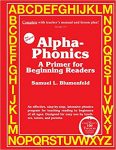 Start had no effect on all of the measures.
Start had no effect on all of the measures. - For the 21 measures of parent-reported health outcomes for the three-year-old cohort, access to Head Start had only one beneficial effect and failed to have an impact on the 20 other measures.
Rather than create a new federal preschool program, Congress should focus on terminating, consolidating, and reforming existing programs to serve children’s needs better and to improve efficiency for taxpayers.
Conclusion
Since 1965, the federal government has sought to improve early educational opportunities for disadvantaged children through the Head Start program, spending more than $167 billion of taxpayers’ money on Head Start. Head Start currently serves approximately 900,000 at an annual cost of at least $7,300 per child.
In the 1990s, Congress mandated an evaluation of Head Start’s effectiveness. In 2010, the Department of Health and Human Services finally released the results of the impact evaluation of first-grade students. Overall, the evaluation found that the program largely failed to improve the cognitive, socio-emotional, health, and parenting outcomes of children who participated in Head Start compared to the outcomes of similar children. According to the report, “the benefits of access to Head Start at age four are largely absent by 1st grade for the program population as a whole.” Head Start’s disappointing results cast doubt over the effectiveness of federal preschool interventions and highlight the need to review the effectiveness of the federal government’s current 69 preschool and child care programs.
These results should be of importance to Members of Congress and the Administration. However, the Administration has called for significant increases in federal spending on preschool, and the House of Representatives has already passed legislation to create an $8 billion preschool program.
Rather than create a new federal preschool program, Congress should focus on terminating, consolidating, and reforming existing programs to serve children’s needs better and to improve efficiency for taxpayers.
For Full Report Click HERE
ALPHA-PHONICS is a reading program that can easily be used by Parents to teach their OWN children to read in a short period of time. Parents have been using this phonics based program successfully for over 36 years. Find out all about it below:
WEBSITE TESTIMONIALS REVIEWS AWARDS HOWS TO ORDER


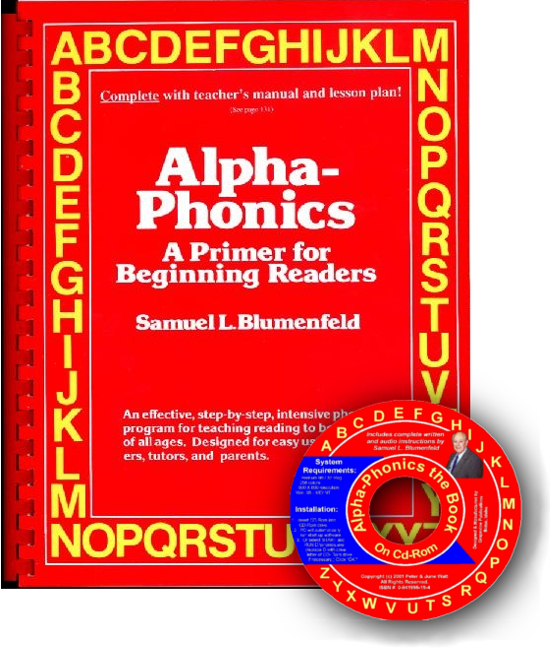 Alpha-Phonics
Alpha-Phonics The Alphabet Song!
The Alphabet Song! Water on the Floor
Water on the Floor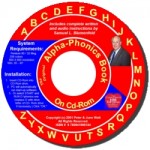 Alpha-Phonics the Book on CD Rom
Alpha-Phonics the Book on CD Rom Blumenfeld Oral Reading Assessment Test
Blumenfeld Oral Reading Assessment Test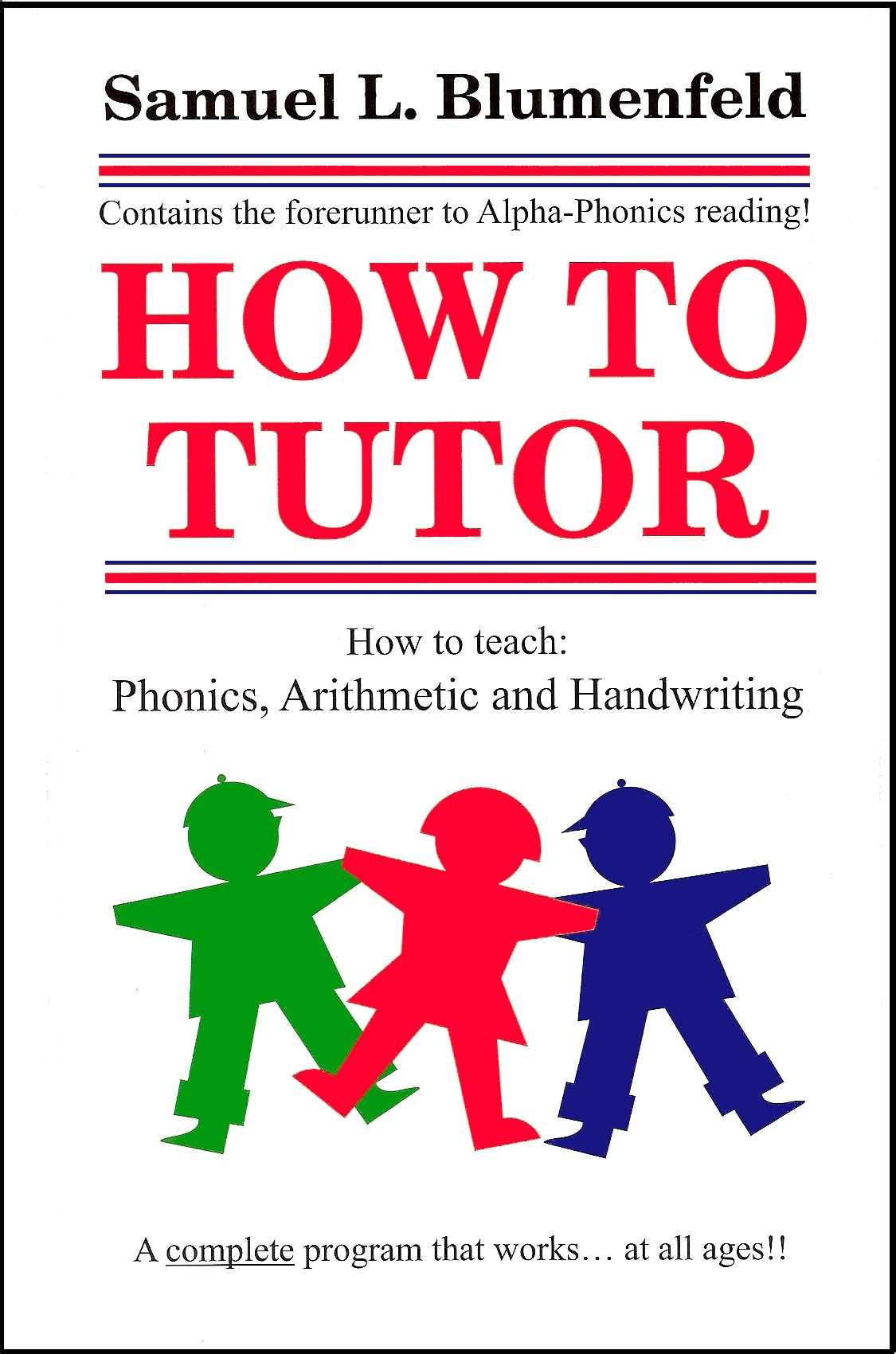 How To Tutor
How To Tutor How To Tutor Cursive Handwriting Workbook
How To Tutor Cursive Handwriting Workbook